
Aarhus C: The Heartbeat of Denmark's Cultural Capital
Explore Aarhus C, where historic charm meets modern innovation in Denmark's cultural capital. Discover art, history, cuisine, and scenic beauty in this vibrant neighborhood.
Aarhus C, the vibrant core of Denmark's second-largest city, is a delightful blend of historic charm and modern innovation. This bustling neighborhood offers an array of experiences for tourists, from its cobblestone streets and colorful houses to its cutting-edge architecture and dynamic cultural scene. Aarhus C is home to some of the city's most iconic landmarks, including the ARoS Aarhus Art Museum, known for its striking rainbow panorama, and the historic Aarhus Cathedral, which dates back to the 12th century. The lively Latin Quarter, with its narrow alleys and boutique shops, invites visitors to explore its hidden gems, while the vibrant city center boasts a variety of cafes, restaurants, and bars, perfect for sampling local Danish cuisine. For those interested in history, the open-air museum Den Gamle By offers a fascinating glimpse into Danish life from the 18th century to the 1970s. Aarhus C also prides itself on its green spaces, with the beautiful Botanical Garden and serene Aarhus University Park offering tranquil escapes amidst the urban setting. The neighborhood's waterfront, featuring the modern Dokk1 library and the bustling Aarhus Ø district, provides a picturesque setting for leisurely strolls and panoramic views of the bay. Whether you're an art enthusiast, history buff, foodie, or nature lover, Aarhus C promises an unforgettable experience.
Local tips in Aarhus C
- Visit ARoS Aarhus Art Museum early in the day to avoid crowds and fully enjoy the rainbow panorama.
- Wear comfortable shoes for exploring the cobblestone streets of the Latin Quarter.
- Check out the local events calendar; Aarhus C often hosts festivals, markets, and cultural events.
- Take a walk along the waterfront in the evening for stunning sunset views.
- Use public transport or rent a bike for easy and eco-friendly navigation around the neighborhood.
Aarhus C: The Heartbeat of Denmark's Cultural Capital
Aarhus C, the vibrant core of Denmark's second-largest city, is a delightful blend of historic charm and modern innovation. This bustling neighborhood offers an array of experiences for tourists, from its cobblestone streets and colorful houses to its cutting-edge architecture and dynamic cultural scene. Aarhus C is home to some of the city's most iconic landmarks, including the ARoS Aarhus Art Museum, known for its striking rainbow panorama, and the historic Aarhus Cathedral, which dates back to the 12th century. The lively Latin Quarter, with its narrow alleys and boutique shops, invites visitors to explore its hidden gems, while the vibrant city center boasts a variety of cafes, restaurants, and bars, perfect for sampling local Danish cuisine. For those interested in history, the open-air museum Den Gamle By offers a fascinating glimpse into Danish life from the 18th century to the 1970s. Aarhus C also prides itself on its green spaces, with the beautiful Botanical Garden and serene Aarhus University Park offering tranquil escapes amidst the urban setting. The neighborhood's waterfront, featuring the modern Dokk1 library and the bustling Aarhus Ø district, provides a picturesque setting for leisurely strolls and panoramic views of the bay. Whether you're an art enthusiast, history buff, foodie, or nature lover, Aarhus C promises an unforgettable experience.
Iconic landmarks you can’t miss
The Old Town
Den Gamle By in Aarhus is an immersive open-air museum, bringing centuries of Danish urban life to life via historic buildings, costumed interpreters, and living history experiences.
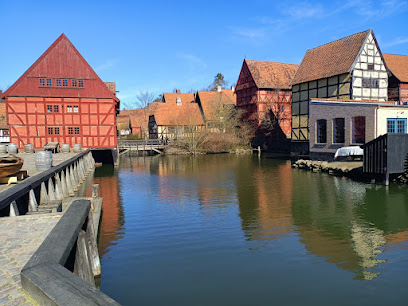
ARoS Aarhus Art Museum
ARoS Aarhus Art Museum in Denmark offers vibrant Nordic art, innovative exhibitions, and panoramic city views via its iconic rainbow skywalk in central Aarhus.
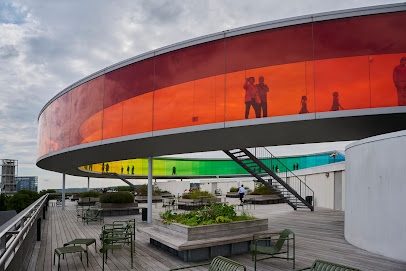
The Infinite Bridge
Experience the endless allure of Aarhus Bay on the iconic circular Infinite Bridge.
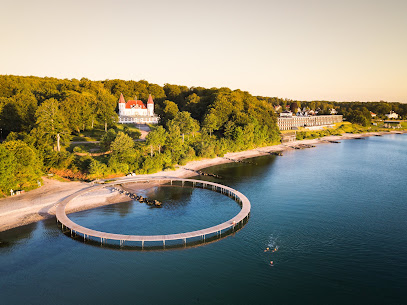
Marselisborg Castle
Marselisborg Castle is the Danish royal family’s summer residence, surrounded by public gardens and parkland near central Aarhus, blending history, heritage, and tranquility.
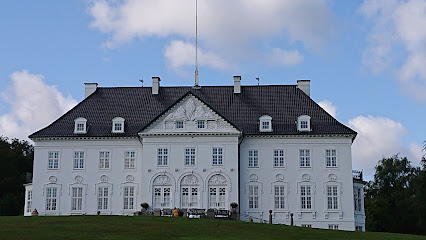
Aarhus Cathedral
Denmark’s largest cathedral, a Gothic masterpiece in Aarhus C, renowned for medieval frescoes, stunning vistas, and a vibrant city square atmosphere.
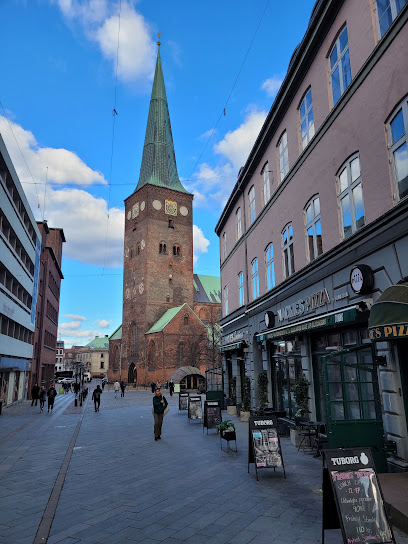
Viking Museum
Explore Aarhus's Viking roots at the underground Viking Museum, showcasing artifacts and structures from ancient Aros.
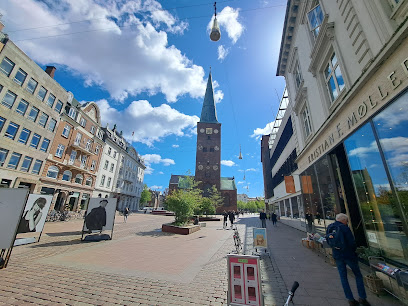
Rådhusparken
A green urban retreat beside Aarhus City Hall, Rådhusparken blends modern Danish design, public art, and local life for a quintessential city-center experience.
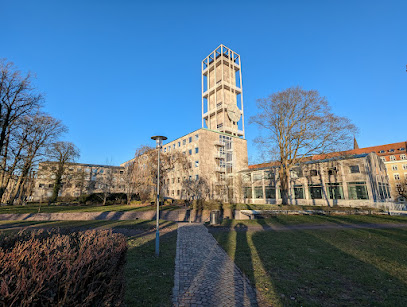
Udsigtspladsen
Experience breathtaking city, harbor, and bay vistas from one of Aarhus C’s most beloved scenic viewpoints, perfect for relaxation and panoramic photography.

Aarhus waterfront
A dynamic meeting point of culture, Danish design, and maritime energy along the scenic bay, Aarhus Waterfront is the city’s vibrant urban escape.
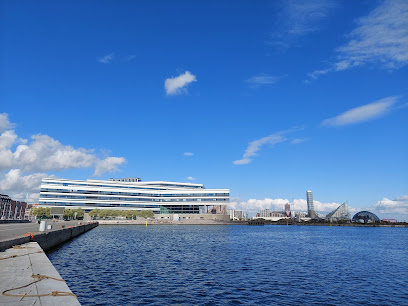
Latin Quarter
Winding cobblestone streets, historic facades, and a creative spirit fill Aarhus’s Latin Quarter, the city’s oldest district and its cultural heartbeat.
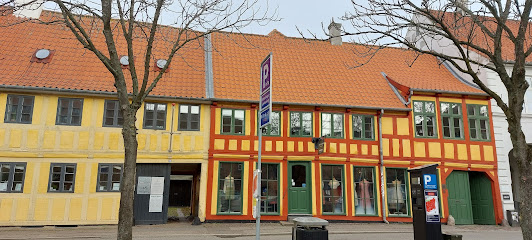
Essential places to dine
Restaurant ET
Restaurant ET offers elegant French dining with a Nordic twist in the heart of Aarhus, blending classic brasserie cuisine, local ingredients, and riverside charm.
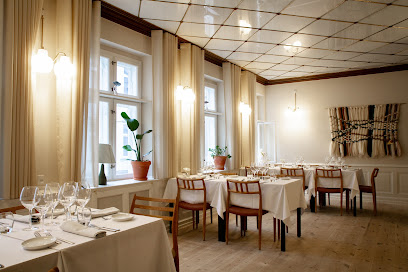
Den Rustikke
Discover Den Rustikke in Aarhus - where traditional Danish cuisine meets modern culinary artistry for an unforgettable dining experience.
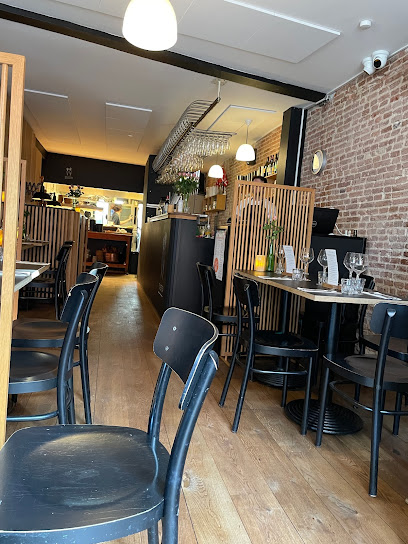
Basso Aarhus
Modern Italian restaurant in Aarhus C serving inventive multi-course social dining with Nordic flair, stylish ambiance, and top-tier ingredients in a lively city-center setting.

Restaurant MellemRum
Restaurant MellemRum in central Aarhus offers creative Danish and European cuisine, served in a stylish, relaxed setting on Fredens Torv in Aarhus C.
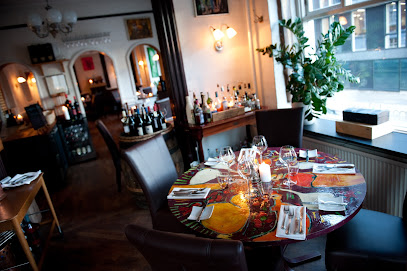
Møf
Inventive new Nordic cuisine, inspired by local ingredients, served in a lively and intimate setting in central Aarhus.
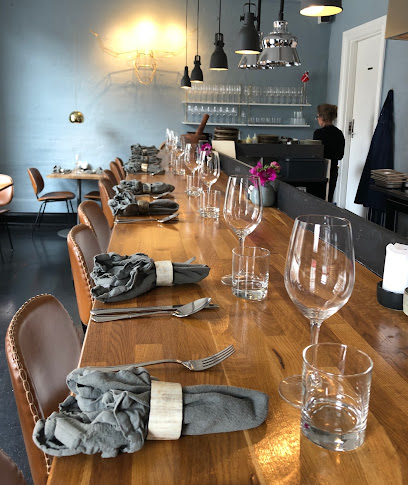
Restaurant Domestic
Experience exquisite local cuisine at Restaurant Domestic in Aarhus C - where innovation meets tradition for an unforgettable dining experience.

Pihlkjær Restaurant
Experience contemporary Danish cuisine and Nordic hospitality at Pihlkjær Restaurant, a celebrated culinary destination in Aarhus’ vibrant city center.
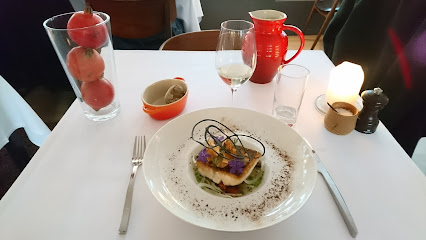
Substans
Michelin-starred Substans offers an elevated New Nordic dining journey above the Aarhus waterfront, combining seasonal local produce, creative gastronomy, and panoramic views.
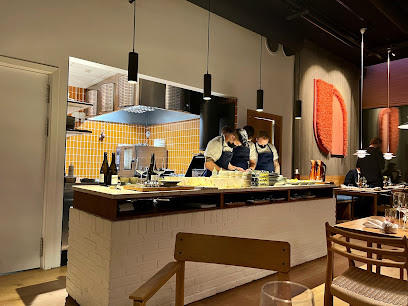
Le Basilic
Experience authentic French cuisine in the heart of Aarhus's Latin Quarter at Le Basilic.
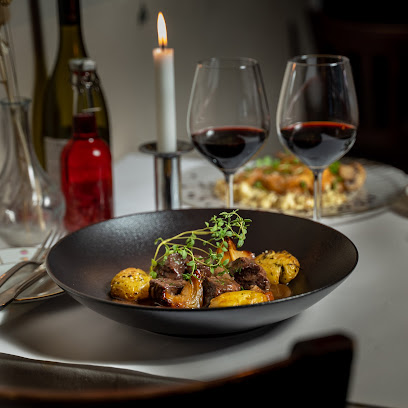
Local Phrases
-
- HelloHej
[hey] - GoodbyeFarvel
[far-vel] - YesJa
[ya] - NoNej
[nay] - Please/You're welcomeVær så god
[ver so good] - Thank youTak
[tahk] - Excuse me/SorryUndskyld
[oon-skul] - How are you?Hvordan har du det?
[voor-dan har doo deht] - Fine. And you?Fint. Og du?
[feent. aw doo] - Do you speak English?Taler du engelsk?
[ta-ler doo eng-elsk] - I don't understandJeg forstår ikke
[yay for-stor ee-keh]
- HelloHej
-
- I'd like to see the menu, pleaseJeg vil gerne se menuen, tak
[yay vil geer-neh say menu-en, tahk] - I don't eat meatJeg spiser ikke kød
[yay spee-ser ee-keh kewd] - Cheers!Skål!
[skawl] - I would like to pay, pleaseJeg vil gerne betale, tak
[yay vil geer-neh beh-tah-le, tahk]
- I'd like to see the menu, pleaseJeg vil gerne se menuen, tak
-
- Help!Hjælp!
[hyelp] - Go away!Gå væk!
[goh vek] - Call the Police!Ring til politiet!
[ring teel po-lee-tee-et] - Call a doctor!Ring efter en læge!
[ring af-ter en lay-eh] - I'm lostJeg er blevet væk
[yay er bleh-vet vek] - I'm illJeg er syg
[yay er soog]
- Help!Hjælp!
-
- I'd like to buy...Jeg vil gerne købe...
[yay vil geer-neh kew-beh] - I'm just lookingJeg kigger bare
[yay kee-ger bah-reh] - How much is it?Hvor meget koster det?
[vor meh-eh cost-er deht] - That's too expensiveDet er for dyrt
[deht er for deer-t] - Can you lower the price?Kan du sænke prisen?
[kan doo sahn-keh pree-sen]
- I'd like to buy...Jeg vil gerne købe...
-
- What time is it?Hvad er klokken?
[vad er klok-en] - It's one o'clockKlokken er et
[klok-en er et] - Half past (10)Halv ti
[halv tee] - MorningMorgen
[mor-gen] - AfternoonEftermiddag
[ef-ter-mee-dag] - EveningAften
[af-ten] - YesterdayI går
[ee gor] - TodayI dag
[ee dah] - TomorrowI morgen
[ee mor-gen] - 1Et
[et] - 2To
[toh] - 3Tre
[treh] - 4Fire
[feer-eh] - 5Fem
[fem] - 6Seks
[seks] - 7Syv
[soov] - 8Otte
[ot-teh] - 9Ni
[nee] - 10Ti
[tee]
- What time is it?Hvad er klokken?
-
- Where's a/the...?Hvor er en/et...?
[vor er en/et] - What's the address?Hvad er adressen?
[vad er ad-res-en] - Can you show me (on the map)?Kan du vise mig (på kortet)?
[kan doo vee-se mey (poh kort-eh)] - When's the next (bus)?Hvornår er næste (bus)?
[vor-nar er nes-te (bus)] - A ticket (to ....)En billet (til ....)
[en bil-et (til)]
- Where's a/the...?Hvor er en/et...?
History of Aarhus C
-
Aarhus C, the central part of Aarhus, has its origins dating back to the Viking Age, around the year 1000. It was established as a trading post on the east coast of Jutland, strategically positioned at the mouth of the Aarhus River. The name 'Aarhus' is believed to be derived from the Old Norse words 'ár' meaning river and 'hus' meaning house, indicating its role as a gathering place for trade and commerce.
-
By the late Middle Ages, Aarhus C had emerged as an important market town. The establishment of the Aarhus Cathedral in the 12th century marked a significant religious influence in the area. The town grew around this ecclesiastical center, with the Cathedral becoming a hub for trade and cultural exchange, contributing to the development of a vibrant urban community.
-
During the Renaissance, especially in the 16th and 17th centuries, Aarhus C experienced economic growth due to its thriving trade activities. The town obtained market rights in 1441, allowing it to expand its trading operations. This period saw the construction of merchant houses and warehouses, which laid the groundwork for the bustling commerce that characterizes the area today.
-
The 19th century brought significant industrialization to Aarhus C, with the establishment of factories and shipyards, contributing to a rapid increase in population. The construction of the railway in the 1860s further enhanced trade connectivity, transforming Aarhus into a major industrial center in Denmark. This urbanization led to the development of new neighborhoods and infrastructure that defined the modern city.
-
The 20th century saw Aarhus C evolve into a cultural hub, marked by the establishment of institutions such as the Aarhus Art Museum (now ARoS Aarhus Art Museum) in 2004 and the Danish School of Media and Journalism. The city embraced its cultural heritage while fostering contemporary arts and education, reflecting a blend of history and modernity that characterizes the area.
Aarhus C Essentials
-
Aarhus C, the city center of Aarhus, is easily accessible from other neighborhoods within the city. The main train station, Aarhus H, serves as a hub for regional and national trains, making it convenient to arrive from cities like Copenhagen or Aalborg. Local buses also connect Aarhus C to various neighborhoods, including Trøjborg, Viby, and Nørresten. If you are in the vicinity, cycling is a popular option, with dedicated bike lanes leading directly into the city center.
-
Aarhus C is well-served by public transport, including buses and light rail. The city operates an efficient bus network, with several lines running frequently throughout the day. For a more scenic option, consider using the Aarhus Light Rail, which connects the city center to nearby areas. Biking is also a favored mode of transport, with bike rental stations available throughout the city. Walking is highly recommended, as many attractions are located close together.
-
Aarhus C is generally a safe neighborhood for tourists, but it is wise to exercise standard precautions. While violent crime is rare, petty theft can occur in crowded areas, especially near popular attractions. Areas around the central train station and certain parks may see a higher incidence of minor crime, so remain vigilant and keep your belongings secure. It is advisable to avoid poorly lit streets at night.
-
In case of an emergency, dial 112 for police, fire, or ambulance services in Denmark. Aarhus has several hospitals and medical facilities, including the Aarhus University Hospital. It is advisable to have travel insurance that covers medical emergencies. For non-urgent medical issues, local pharmacies can provide assistance and over-the-counter medications.
-
Fashion: Do dress comfortably and appropriately for Denmark's weather. Layers are advisable, and casual attire is generally acceptable. Don't wear overly formal clothing unless attending a specific event. Religion: Do respect local customs, especially when visiting churches; modest dressing is appreciated. Public Transport: Do be courteous; offer your seat to elderly passengers. Don't eat or drink on public transport. Greetings: Do greet locals with a friendly smile and a simple 'Hej' (Hello). Don't assume familiarity; maintain a respectful distance initially. Eating & Drinking: Do try local specialties and enjoy the café culture. Don't waste food, as it is considered impolite.
-
To experience Aarhus C like a local, visit the local markets, such as the Aarhus Central Food Market, for fresh produce and gourmet delights. Engage with locals in cafés and bars, where you can learn about the city's culture and history. Attend local events or festivals if your visit coincides with one, as these can provide a unique insight into the community. Don’t miss the ARoS Aarhus Art Museum for its stunning rooftop rainbow panorama, and explore the Latin Quarter for its charming streets and boutique shops.
Nearby Cities to Aarhus C
-
Things To Do in Randers
-
Things To Do in Horsens
-
Things To Do in Silkeborg
-
Things To Do in Viborg
-
Things To Do in Vejle
-
Things To Do in Kalundborg
-
Things To Do in Herning
-
Things To Do in Odense
-
Things To Do in Kolding
-
Things To Do in Nyborg
-
Things To Do in Aalborg
-
Things To Do in Slagelse
-
Things To Do in Ribe
-
Things To Do in Roskilde
-
Things To Do in Esbjerg












